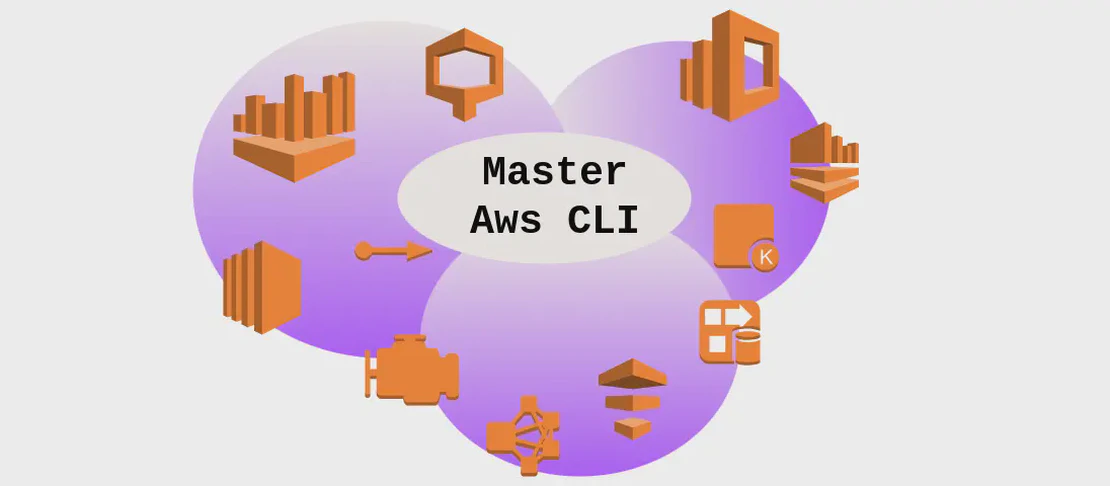
How to use the command 'aws s3 mv' (with examples)
The AWS Command Line Interface (CLI) includes a myriad of utilities for managing AWS resources directly from your terminal or command line. One particularly useful command is aws s3 mv, which facilitates the movement of files or objects either from a local source to an Amazon S3 bucket, between S3 buckets, or within a local environment. By automating the movement of these files, users can efficiently manage data workflows directly from the command line without manually uploading or downloading items.
Use Case 1: Move a file from local to a specified bucket
Code:
aws s3 mv path/to/local_file s3://bucket_name/path/to/remote_file
Motivation:
Imagine you are working on a project that generates log files daily, which need to be stored centrally for backup and analysis. These log files reside locally on your system. Instead of manually uploading them via the AWS Management Console, you can use this command to automate the transfer of files to your designated Amazon S3 bucket. This ensures that your files are stored in a highly durable, scalable environment without manual intervention.
Explanation:
aws s3 mv: This part invokes the specific AWS CLI command to move a file using the S3 service.path/to/local_file: This argument specifies the location and name of the file on your local file system that you want to transfer.s3://bucket_name/path/to/remote_file: This is the destination S3 location where the file will be moved. It includes the bucket name and the desired path/name for the file in the S3 bucket.
Example Output:
move: ./path/to/local_file to s3://bucket_name/path/to/remote_file
Use Case 2: Move a specific S3 object into another bucket
Code:
aws s3 mv s3://bucket_name1/path/to/file s3://bucket_name2/path/to/target
Motivation:
Consider a scenario where you need to reorganize data for better management or access. You have a file within one S3 bucket that needs to be relocated to another bucket owned by a different department or project. Utilizing this command saves time and reduces the potential for human error that can occur from downloading and re-uploading files across buckets.
Explanation:
aws s3 mv: This part of the command initiates the move action using the AWS S3 service.s3://bucket_name1/path/to/file: The first argument is the source bucket and path where the file currently resides.s3://bucket_name2/path/to/target: The second argument specifies the destination bucket and path where the file should be placed.
Example Output:
move: s3://bucket_name1/path/to/file to s3://bucket_name2/path/to/target
Use Case 3: Move a specific S3 object into another bucket keeping the original name
Code:
aws s3 mv s3://bucket_name1/path/to/file s3://bucket_name2
Motivation:
Sometimes, files may need to be relocated between S3 buckets without altering their filenames. For instance, systematically archiving data into a separate bucket as a backup while maintaining the original naming convention ensures consistency and facilitates future retrieval.
Explanation:
aws s3 mv: This keyword is used to invoke the move operation under the AWS S3 command set.s3://bucket_name1/path/to/file: Indicates the original location within the source bucket where the object is stored.s3://bucket_name2: Represents the target bucket’s root path, where the file will be transferred while retaining its original name.
Example Output:
move: s3://bucket_name1/path/to/file to s3://bucket_name2/file
Use Case 4: Display help
Code:
aws s3 mv help
Motivation:
Understanding the full potential and functionality of the aws s3 mv command necessitates accessing its help documentation. This is crucial for both new and experienced users who wish to discover or refresh their knowledge on various options, flags, and use case scenarios that the command offers.
Explanation:
aws s3 mv help: This phrase requests the help content associated with themvcommand under the AWS S3 services section, providing detailed information on all available options and correct usage patterns.
Example Output:
Usage: aws s3 mv <source> <destination> [--options]
Moves an object from one location to another.
...
Conclusion:
The aws s3 mv command is an efficient and powerful tool for managing data transfers to, from, and within Amazon S3. Its ability to transfer files seamlessly between local systems and S3, as well as between different buckets, proves invaluable in various operational scenarios, ensuring data is correctly distributed and organized. Leveraging this command in your workflow can enhance productivity and accuracy, whether you’re managing personal, organizational, or large-scale data infrastructures.


